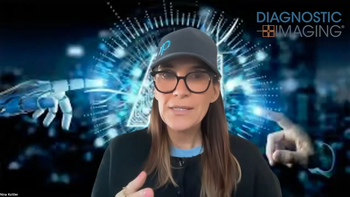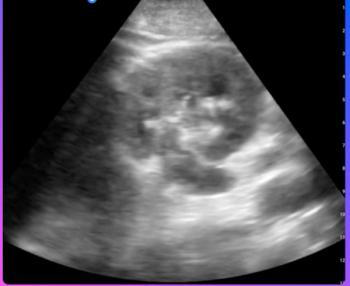
Overcallers Anonymous
When too many abnormal findings becomes normal in radiology.
It was an oft repeated exchange in the reading rooms of my residency. A junior rez, reviewing cases with one of the attendings who had come out of semi-retirement in private practice to re-experience the academic life, would be in the midst of offering his/her notions as to what a given X-ray portrayed.
One of those notions, most often cardiomegaly, would provoke a reaction from the attending, who would make a face and characteristically retort, “Whaddaya wanna give ‘em that for?” To be followed by a short chat on the potential downsides of overdiagnosing, like saddling the patient with medical labels that might get repeated throughout the hapless individual’s life. “He’ll never be able to get insurance,” was one of the upshots. I’ve often wondered if that particular line got dropped from the dialog after PPACA outlawed screening on the basis of preexisting conditions.
The underlying wisdom was not to be denied. It is awfully easy to be an “overcaller,” erring on the side of declaring too much abnormal rather than too little. Peer review zingers and medmal allegations seem far less likely to result from excessive caution (“cannot exclude diagnosis X,” “appearance could consist with condition Y,” etc.) than they do from declaring things normal that turn out not to be.
There’s also something to be said for tending towards overcalling in one’s earlier career, and gradually progressing towards undercalling as one builds confidence and experience. I’ve wondered, however, at just how and when the transition occurs. That is, what makes a rad consider some aspect of a case normal (or, shall we say, normal enough not to dictate otherwise) today, but abnormal months or years earlier in the rad’s career?[[{"type":"media","view_mode":"media_crop","fid":"48415","attributes":{"alt":"Diagnosis in radiology","class":"media-image media-image-right","id":"media_crop_9841685936571","media_crop_h":"0","media_crop_image_style":"-1","media_crop_instance":"5767","media_crop_rotate":"0","media_crop_scale_h":"0","media_crop_scale_w":"0","media_crop_w":"0","media_crop_x":"0","media_crop_y":"0","style":"height: 180px; width: 180px; border-width: 0px; border-style: solid; margin: 1px; float: right;","title":"©Feuerbach/Shutterstock.com","typeof":"foaf:Image"}}]]
Probably the most valid reason would be new scientific research. Suppose, for instance, a massive, rigorous study came out tomorrow that overwhelmingly supported a new threshold measurement for some diagnosis or other-appendiceal thickness, aortic diameter, whatever. An up-to-date rad, seeing this, might well adjust his methods.
Next might be formal pronouncements by authoritative sources, like a “white paper” from the ACR regarding diagnostic criteria. Again, a rad keeping current by reading such things might do well to adopt such guidelines, lest he be out of step with the rest of his field.
Even without such changes in what constitutes the field’s standard of care, a rad might come across an older write-up (or wise words from a respected colleague) and realize that, egad, he’s been doing things the wrong way…and henceforth, does better.
Such external (internal?) validations are rare, however, and I have found that it is more often a gradual process. At least for me, a matter of seeing hundreds to thousands of cases over a period of time, and gradually getting the impression that, hey, I’m calling abnormality X an awful lot. Can that much of the patient population really be abnormal? Or do I need to adjust my diagnostic thresholds a little?
The first step, to modify the old expression, is for the overcaller to recognize that he might have a problem. Next time, I’ll identify some of the more frequent overcall offenders I’ve seen.
Newsletter
Stay at the forefront of radiology with the Diagnostic Imaging newsletter, delivering the latest news, clinical insights, and imaging advancements for today’s radiologists.




























